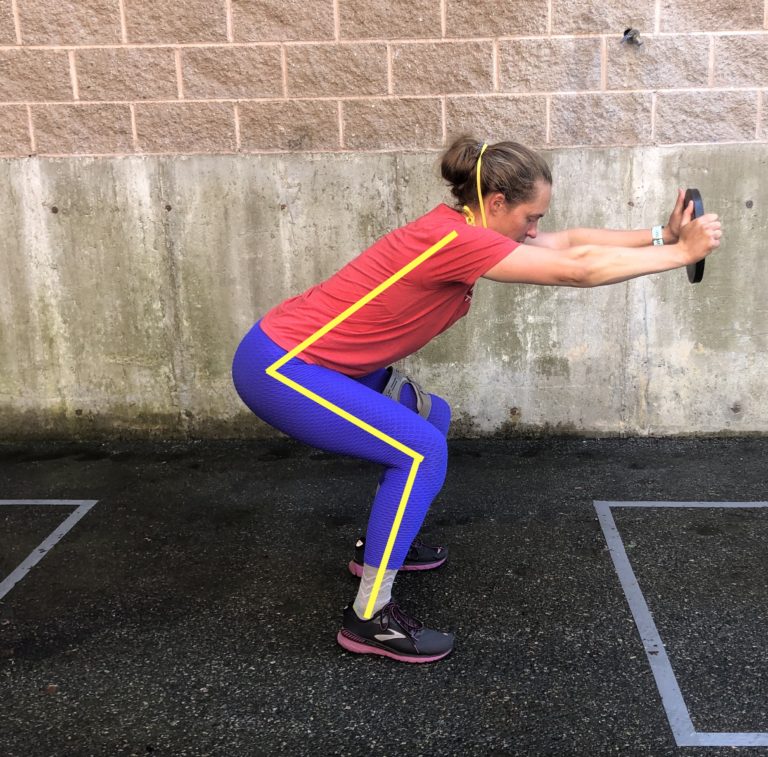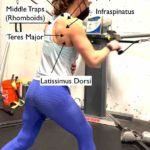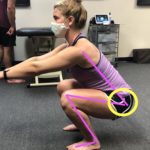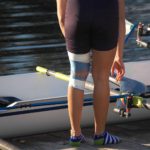- Why are squat mechanics important for rowing?
- Comparing Catch Position to the bottom of a Squat:
- How to look at Squat mechanics to help your Rowing technique:
- Squat mechanics by the joint and how it applies to your rowing stroke:
- What common rowing injuries can be linked to poor squat mechanics?
- How do I improve my squat mechanics and my rowing stroke?
- Sources:
Why are squat mechanics important for rowing?
This seems fairly straight forward, rowing is essentially a horizontal squat. We bend our hips, knees, and ankles while attempting to maintain our spine position as we go into the recovery and through the drive. Simple right.. then why is it common that rowers have a hard time with this pattern? Learning proper squat mechanics for both the weight room and your rowing stroke can go a very long way! A proper squat helps you learn how to use your hips rotators, hip extensors, and core to stabilize the power you can generate from your legs, it can help you prevent knee pain, hip pain, low back pain and even shoulder pain. The proper sequence will improve your translation of power through the handle in a horizontal direction (avoiding too much verticle or rotational force) increasing your boat speed and run per stroke. Having good eccentric control going down into a squat (not just dropping with gravity) helps have a controlled recovery, helps prevent rushing the slide and helps avoid putting to much momentum or force in the wrong direction.



Comparing Catch Position to the bottom of a Squat:
I was curious how catch position on the erg relates to the bottom of the squat so, with the friends/Riverside rowers who helped me with the videos and pictures for this post (meet Jillian and Amel). I measured their knee flexion angle in both positions, you know what’s cool… the angles are very close to the same, within 10 degrees of each other bodyweight squat to catch position. What does this mean?? Having good squat mechanics and working on loading your squat in the gym should directly translate to better pick up and initial power on the drive. Working in the gym on pieces of your mechanics and mobility will help with a more powerful and more connected turn over of horizontal power for your drive. Spending time in the gym getting stronger also makes you more resilient to help avoid injury and train harder and more constantly so improving your technique while you improve your squat is a win-win!




How to look at Squat mechanics to help your Rowing technique:


Squat mechanics by the joint and how it applies to your rowing stroke:
All your lower body joints (hips, knee, ankle) need to be able to move well and stabilize well for a good squat, just as they need to do for full compression and translation of power in your rowing stroke. However whether your para- classification includes some joint mobility limitations OR your age is making your hips, knees and ankles less “bendy”, there are some compromises your body will make and some “proper” ways to adjust to this. Something to check for yourself or see a physio/physical therapist for is to optimize the form for the range you have so that your drive is as powerful as possible.
Ankles:
Dorsiflexion: The ideal amount of “toes to shin mobility” for rowers is 40-45 degrees (Gourley, B 2020). This allows you to keep your heels in contact with the footplates to have a good connection and horizontal force translation with the change in direction to the drive.
When assessing this in a squat, you want your torso and shin angles to be similar. When there is less dorsiflexion it makes getting into a deeper squat more challenging, you will see a more verticle shin and likely greater trunk lean than shin angle. Sometimes this is just your anatomy, sometimes working on improved ankle mobility and/or improving control at the bottom of your squat and into the catch will go a long way!

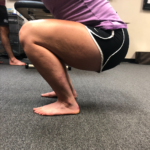
Here you see a good amount of ankle mobility at the bottom of a squat. Notice how her trunk angle and shin angle are similar and she is getting deep into a squat just as she gets far up the slide for the catch. 

Again, mobile ankles (enough dorsiflexion) and trunk and shin angles are similar at the bottom of the squat. 

With slightly less ankle dorsiflexion he needs a little more trunk angle compared to shins to feel comfortable in the bottom of his squat. More dorsiflexion would help the shin and trunk angles match
Decreased ankle mobility: You will likely see a decreased depth of your squat and decreased slide length, difficulty keeping your weight in your heels, or your feet connected to the footboard at the catch/initial drive. There are some ways to alter your set up in the gym to compensate for this, some mobility exercises to try and it is worth looking at your foot stretcher set up in the boat to see if you’re in the optimal position. This is something to play with, see what your splits do if you keep your heels down versus if you can let them come up and start your drive with heels off. Some coaches might say this isn’t ideal, but it’s all about speed, maybe you can make it work if you have the right timing and stability at the catch. You can also look at your foot stretcher height, decreased mobility most likely means you’ll want to drop your heels or just make sure your shoes are a bit too big if you can’t adjust the footplate. In the weight room, try something (a 5# plate or short matt) under your heel to allow your knees and hips a bit more space before they hit a wall.
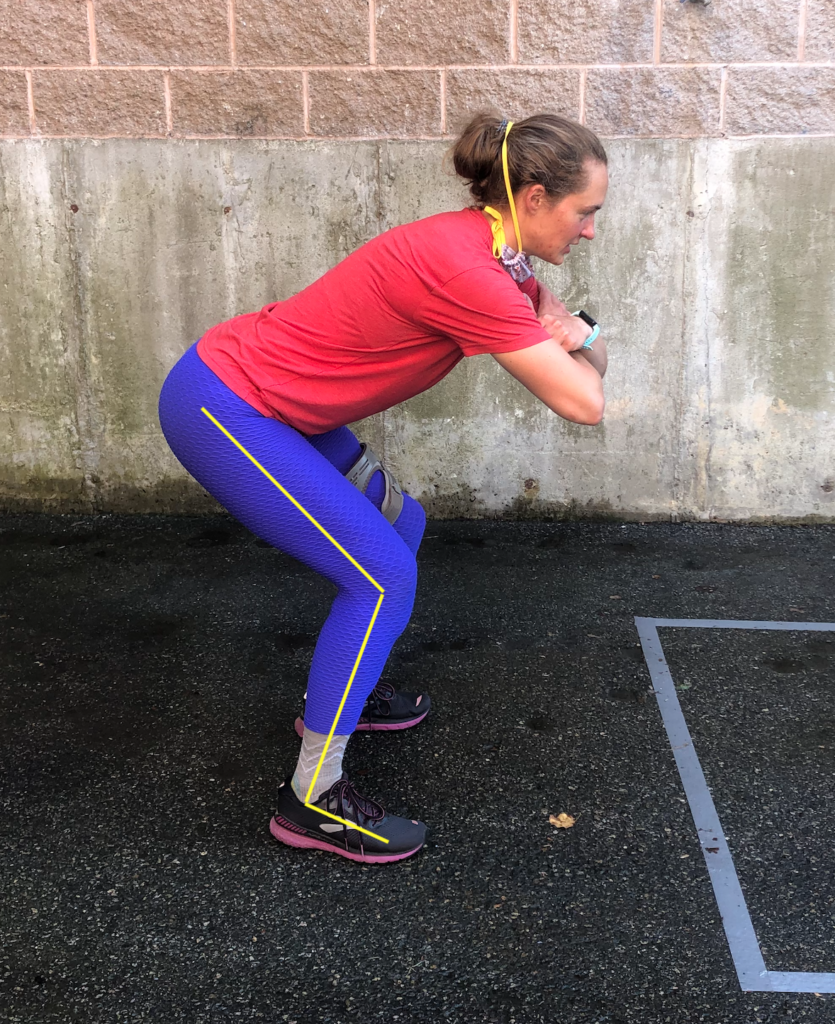



Ankle Mobility Drills


Knees:
This is where the most easily spotted difficulties in squat mechanics are seen across the board in athletes, but I believe especially in rowers! We aren’t training against gravity for our main workload, we rely on the seat to help stabilize our pelvis or we can fake it a little more because if our knees aren’t controlled because we aren’t absorbing impact as we hit the ground as you do with land sports. But guess what, it really matters! Knees moving in and/or out along the slide can cause knee pain and decreased efficiency in horizontal power transfer. What’s great is similar movements patterns from the boat or erg absolutely pop up when looking at someone’s squat form. Knees moving in and out with the slide or a squat is a clue, having wide or narrow knees at the catch is another technique flaw a coach might point out (as we discussed with Amel in the videos above) and in sweep rowing sitting more into one side or opening one knee more to get to your rigger is common. You might not realize you shift to one side to that your knees come in and out until you record yourself, see your Physical Therapist/Physio, have a teammate watch, or a coach and maybe you just need more awareness or maybe you need some better control from your hips or more range in your ankles to improve your squat. The ideal is that as you go deeper into your squat, your knees keep the same line out towards your middle to baby toes, that you keep equal weight between your feet AND there’s no side to side movement of your knees as you go down (into the catch) or press back up from the floor (drive phase).

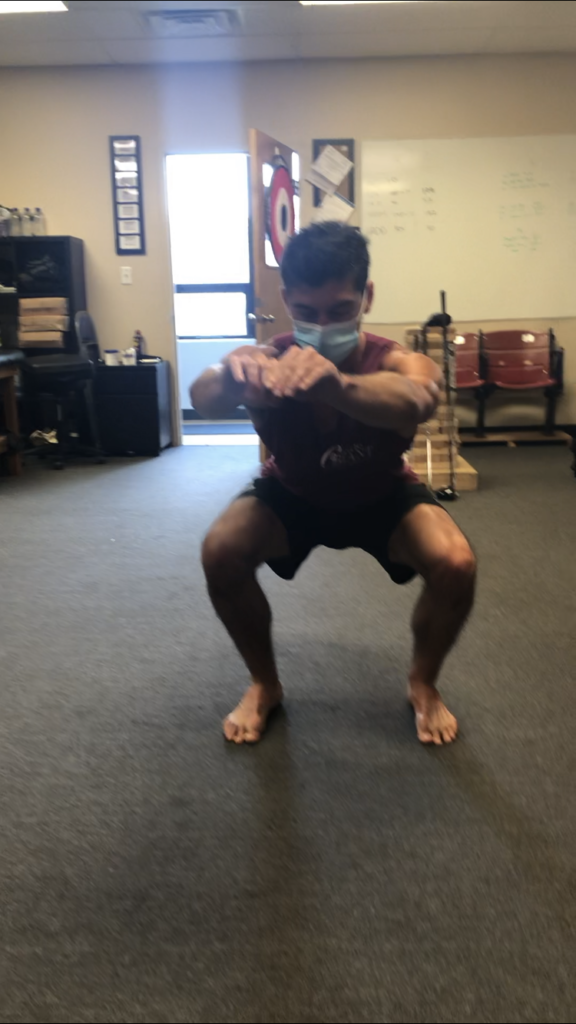
Overall Amel has a good squat, but we see he shifts right some at the bottom, this could affect boat set, steering, how symmetrical his leg drive is, and how stable he feels at the catch. 
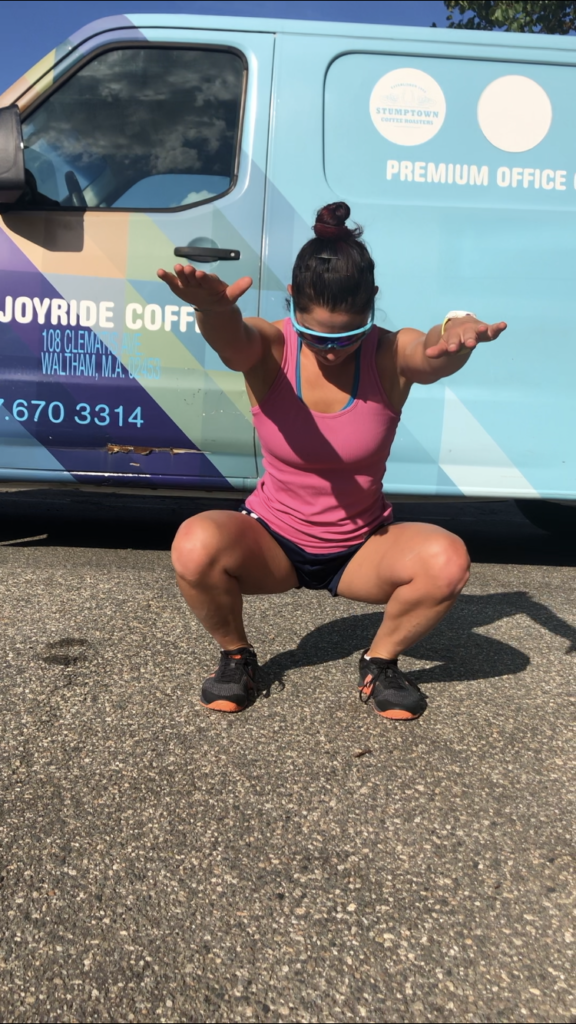
Ilana has great range with her squat, but we see she has to open her knees to get her full range, this can be for a few reasons. Two ideas are: maybe needing some extra stability in her hips or her femurs might just like being a little more open at the hjps (bones don’t change position so you work with how you’re built). Likely shes working with a combination of the two.

Decreased knee mobility: This is huge! You might be a masters rower before or after a knee joint replacement, you might be a classified rower who has decreased knee control of your knees or decreased actual measurable range. This will limit your slide length first and foremost BUT how do you make it work for you?! After a joint replacement for one, the goal should be to regain full knee range of motion, find a good physio/physical therapist to help you get there and do your homework! Regular range of motion exercises at home is huge for joint replacement success! If you have arthritis and aren’t ready for a replacement or otherwise have decreased range, maximizing what you can get from your ankles and hips is helpful BUT also making sure your hips are stable enough that you can use your full available knee range effectively. If your hips are too weak, you might find you open your legs up to the catch, or maybe your knees collapse in, both scenarios will decrease your initial power curve as you transition into the drive. Having to re-align your knees as you press dissipates force into a more rotational direction than you want, it takes away from the amount of force you apply to make the boat move forwards!
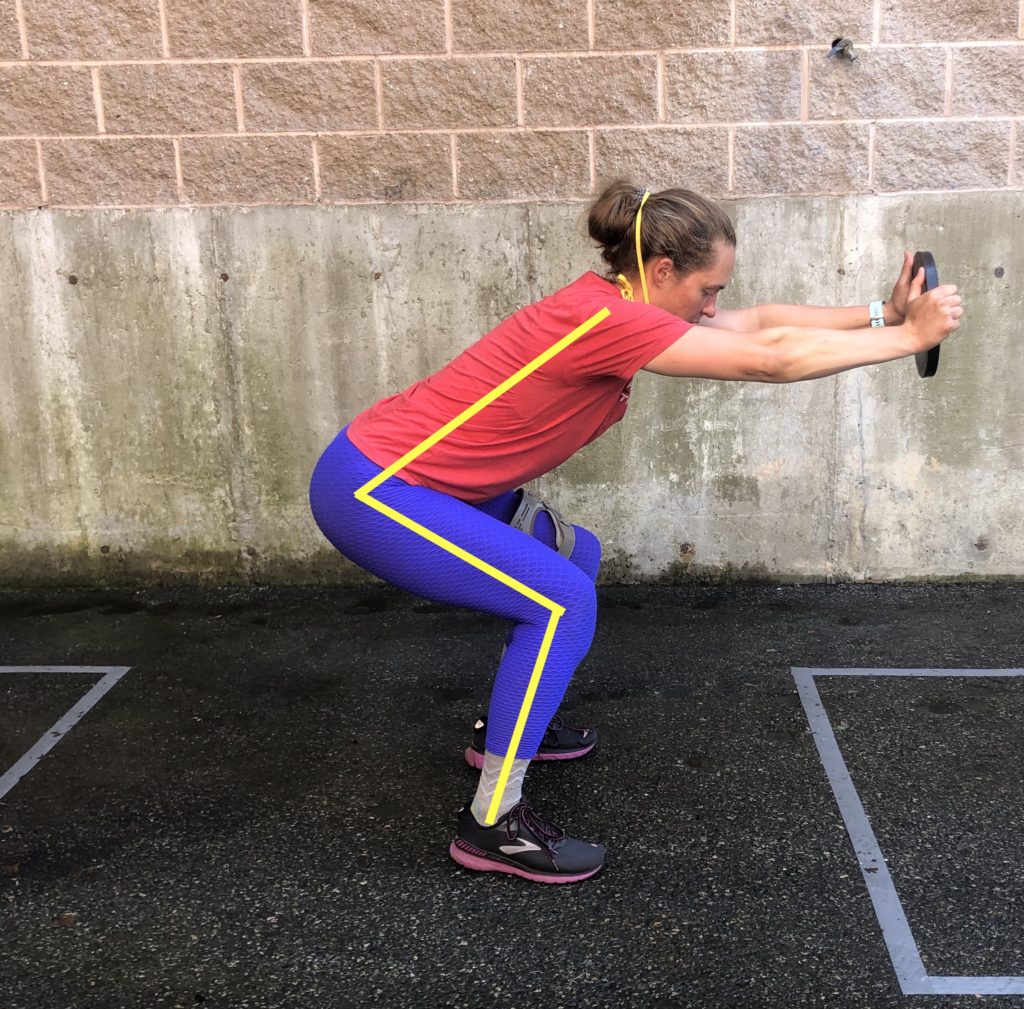

Hips:
Your hips are huge for squatting! This is your connection to your trunk and core, this is where your power from the bottom to change directions comes from and your hips are how you keep your knees and ankles in good positions to have an efficient squat and efficient stroke! Strong outsides of your hips, a good range to fully flex your hips as you squat, and the ability to use your hip extensions or gluteal muscles to change directions out of the bottom of the squat hugely apply to your rowing stroke.
Decreased hip mobility: Less hip flexion, decreased rotation or decreased control of your hip position can call affect your squat mechanics and your rowing mechanics. Having pain at the bottom of a squat is common when you have issues with keeping your hip in a good position as you go deeper. Decreased hip rotation strength makes maintaining knee alignment much more difficult and means you likely loose power from the catch into the initial phase of the drive. Difficulty getting into full hip flexion will likely cause overreach with your trunk leaving your shoulders, ribs and back more vulnerable to injury. This is probably one of the more difficult joints to “workaround” if you don’t have full range and are trying to row with a moving slide. Working with a physical therapist/physio or strength coach to help you gain control of the range you have would be a good strategy to avoid injury elsewhere because of decreased hip range.
What common rowing injuries can be linked to poor squat mechanics?
- Low back pain- poor connection of pelvis position and use of your core to stabilize for legs to drive into the ground for your squat to stand will most often put too much strain on the low back.
- Knee pain- decreased body awareness, decreased range, decreased hip strength and poor mechanics can lead to patella-femoral pain, iliotibial band pain and can wear away at your knees faster if you aren’t keeping your knees in a controlled path with your squat
- Hip pain- decreased hip strength or poor use of hip to stabilize the squat pattern can cause impingement and pain with squatting
- Shoulder pain- poor squat mechanics will likely cause overuse of your shoulders while rowing, decreased core connection, decreased use of hip extensors, decreased leg drive is going to make you want to find the catch and power from somewhere, it can cause too much load through your shoulders.
- Rib injury- Similar to low back and shoulder pain, poor squat mechanics can lead to overloading your mid-back or rib area causing increased injury potential in this area.
How do I improve my squat mechanics and my rowing stroke?
1. Strong Core: A strong core is key to most mechanics involved in rowing and maintaining your posture and connection throughout a workout, in being able to carry your boat and to get your body safely in and out of the boat for a workout. Check out my previous post on some basic suggestions for some different ways to think about your core, it’s not all about the 6-pack abs, it’s not all about how long you can hold a plank. Rowing is way too dynamic for that to be how you measure your core strength!
2. Strong Hips: check out my previous post on some basic suggestions for improving your hip strength. These exercises are a great way to start a home workout, to “wake up” your hips before a run or lift and are the perfect starting point if your hips really need some extra strength before loading patterns like a squat in the gym will be effective for your training!
3. Mobile Ankles: Being able to get to the bottom of a squat, the maximal compressed position at the catch, and effectively translate your power to change directions comes from your ankle mobility and alignment. There are a lot of kind of crazy things out there for how to “work on” ankle mobility, here’s a couple ideas of ways I think are effective, safe and translate well to both your squat mechanics and rowing stroke.
4. A good squat pattern: This can be the most challenging piece! Getting to the point where you can put all the pieces together to perform an effective squat, against gravity (not on your rowing seat) with good smooth controlled movement is huge! To have a good pattern so that you can load a front squat or back squat and improve your strength and power to move boats faster is so important! Have a strength coach, physical therapist or rowing coach give you feedback on how you are doing with your squat pattern. Just because it “feels right” doesn’t mean it is! You might be “butt winking”, you might be collapsing your arches, you might be losing knee alignment, you might be arching your back or rounding it and not even realize. Getting these mechanics down is a huge piece of injury prevention as well as enabling you to improve your rowing performance!
Sources:
- Why are squat mechanics important for rowing?
- Comparing Catch Position to the bottom of a Squat:
- How to look at Squat mechanics to help your Rowing technique:
- Squat mechanics by the joint and how it applies to your rowing stroke:
- What common rowing injuries can be linked to poor squat mechanics?
- How do I improve my squat mechanics and my rowing stroke?
- Sources:

